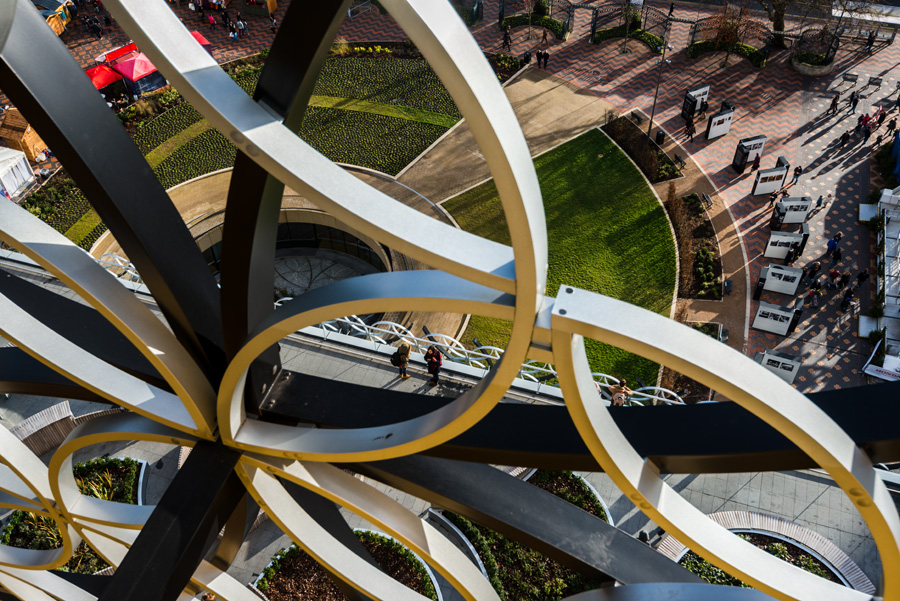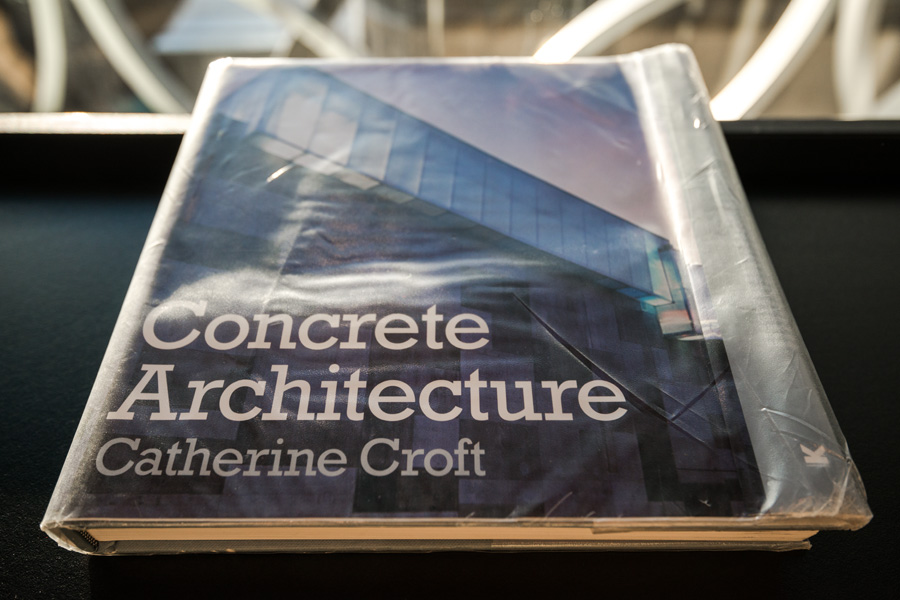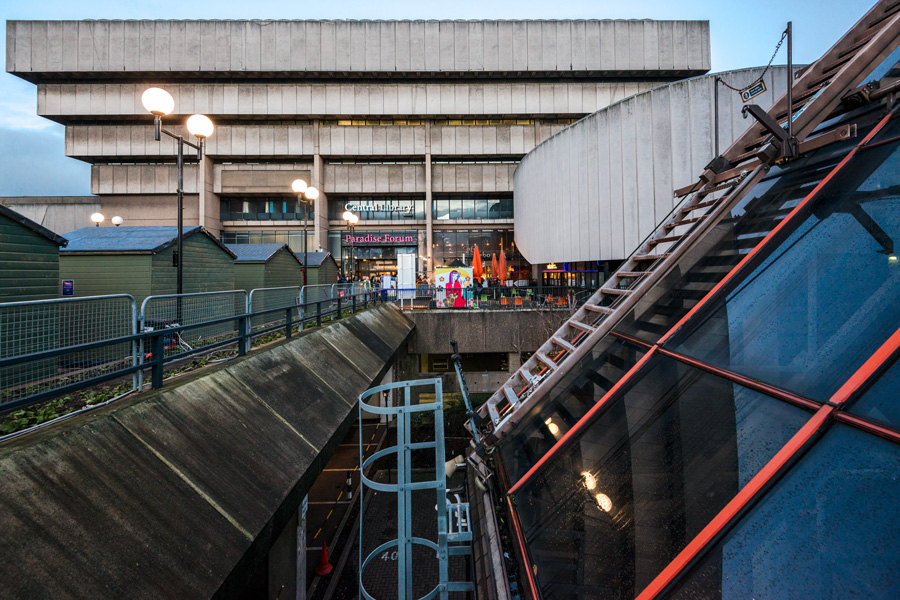The Library of Birmingham – Guest Blog by Joe Plommer
Thank you to Joe for sending us this thought-provoking blog on a very topical issue for us here in Birmingham at the moment.
About Joe Plommer
I’m a London-based photojournalist who visited Birmingham a year ago to photograph the new library and its predecessor. This post explores the idea that while the new library may be better than the old one, it also represents some troubling characteristics of our present culture.
The Library of Birmingham, designed by Dutch architectural practice Mecanoo, has now been thrusting its ring-clad facade over the city’s Centenary Square for a year and a half.
It exemplifies some positive characteristics of contemporary architecture, but also some troubling trends in our wider culture. In October, the City Council slated major cuts to its budget after charitable donations that had been optimistically forecast failed to materialise, and interest on the loans used to pay for the library’s construction mean taxpayers will lay out the £187m cost of building it some three times over before they own the bricks and mortar – or the rings – outright.
Like the Barbican Centre and many other major public buildings of the 70s, Library of Birmingham’s predecessor, Birmingham Central Library, was built in a ‘High Brutalist’ style that referenced the theoretical writings of Alison and Peter Smithson, the later structures of Le Corbusier and Erno Goldfinger, and public housing schemes built earlier the same decade without the help of auteur designers, like the now-demolished Heygate Estate at London’s Elephant & Castle.
By that decade, England’s Georgian terraces – the quintessential home of the urban elite – had become as unfashionable as Augustus Pugin had sought to make them in the mid-1800s when he pioneered the Gothic Revival. In all but the most exclusive areas, they were being ripped down. More generally, this was the decade when labour seemed to be gaining the upper hand over capital: funded by an aggressively progressive tax code, public building projects became ever more ubiquitous; a larger-than-ever proportion of the workforce was unionised.
Maybe, then, the construction of grand cultural edifices in the Brutalist style was an attempt to reassure the upper-middle classes that this new approach to public building – via which a growing proportion of the working class was being housed – was not there to displace them (as Birmingham’s Central Library had, admittedly, done to its Victorian predecessor), and that while the cultural power of the old elites had waned, the art-forms with which they had traditionally identified would be re-housed, albeit in a chastened, more egalitarian fashion.
The new Library of Birmingham represents an inversion of that situation. Writing last month in the Guardian* on the extension to London’s Tate Modern, Will Self noted acerbically that:
Working people on modest to low incomes and the unwaged may no longer be able to afford to live in the city, but their children can at least get to experience for a few hours the aristocratic lifestyle of strolling about and looking at expensive stuff.
Much the same can be said for Birmingham’s new library. Where a generation ago, municipal works mitigated the decline of the elite by rehousing its culture in buildings resembling council estates, now it is the majority whose decline must be mitigated, their financially-based exclusion from city centres’ quasi-privatised glass and steel avenues tempered, just a little, by the opulent remaking of a few carefully-selected public institutions in a style that would not look out of place in a high-end hotel or shopping centre. (Meanwhile, of course, many of these institutions’ more peripheral counterparts are quietly closed.)
The Old Central Library
As I’ve said, The Library of Birmingham is a successful building. It’s spacious while still being labyrinthine. It gives itself easily as a flexible cultural and social space – a meeting point, a vantage point from which to look out over the city – while not leaving any doubt as to the central function around which all this revolves, which is as a repository for books and a place of study.
But a major question for me is what happens to the value that is produced – via public investment – when municipal buildings are renewed to this level of desirability. A key feature of the original Garden Cities were mechanisms enabling increases in land value produced by development to be captured for further public works, rather than simply accruing to landowners. No such mechanism exists in Birmingham, or at Bankside in London where Tate Modern sits, or, to my knowledge, anywhere else in contemporary Britain.
The effect of this is twofold. First, what might have been a source of income for projects benefiting everyone goes un-captured. Second, and much more profoundly: when the huge increases in land value that occur around sites of major public investment in culture are captured privately – usually by big landowners rather than small householders – those surrounding areas become more even exclusive than they were before, and further out of reach of most of the population. As such, these municipal institutions don’t merely create, in themselves, islands of accessibility in our increasingly inaccessible cities, but also directly fuel that very inaccessibility from which refuge must be sought.
Follow Joe on Twitter @joeplommer






The Birmingham Mail recently published a photo of the original Library in Paradise Street from which the spiral staircase could be seen. That brought to mind the staircase in the library that is now under being demolished. Do you know what will happen to it? Will it be used somewhere else or put in storage? Has been sold off?